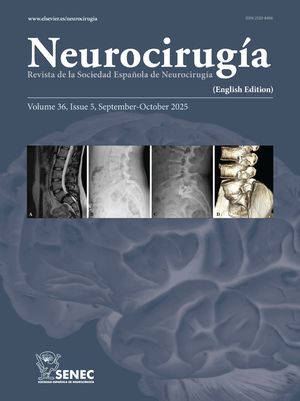El ventrículo terminal es una formación quística, que aparece en el extremo distal del cono medular.
Se presenta el caso de una paciente con una clínica de parestesias en miembros inferiores, junto con calambres y con un examen neurológico que demostraba afectación de vías largas y signos de compresión radicular. La Resonancia Magnética (RM) mostró una lesión quística en el cono medular que no se modificaba tras la inyección de contraste. Mediante una laminectomía dorsal se realizó apertura de un proceso quístico, a tensión, lo cual dió lugar a una mejoría de la clínica presentada inicialmente. Se analizan las características del ventrículo terminal, así como su relación o no con la siringomielia.
Concluimos realzando la importancia de la R.M. para el diagnóstico diferencial con otros procesos quísticos que asientan en la región.
Ventriculus terminalis is formed by a cystic distension of the central canal in the lower end of the conus medullaris.
This patient presented with symptoms of spinal cord and radicular compression at the lumbo-thoracic junction. Magnetic resonance imaging showed a cystic lesion at the conus medullaris, and neither the cyst nor its wall enhanced after contrast administration. Thoracic laminectomy revealed a distended cyst whose colourless liquid content was aspirated, after which the patient's clinical condition improved. The characteristics of ventriculus terminalis cysts and their relation with syringomyelic lesions are discussed.
We conclude emphasizing the role of magnetic resonance imaging in the differential diagnosis of this entity with other cystic lesions in the thoraco-lumbar region.
Article

If it is the first time you have accessed you can obtain your credentials by contacting Elsevier Spain in suscripciones@elsevier.com or by calling our Customer Service at902 88 87 40 if you are calling from Spain or at +34 932 418 800 (from 9 to 18h., GMT + 1) if you are calling outside of Spain.
If you already have your login data, please click here .
If you have forgotten your password you can you can recover it by clicking here and selecting the option ¿I have forgotten my password¿.






